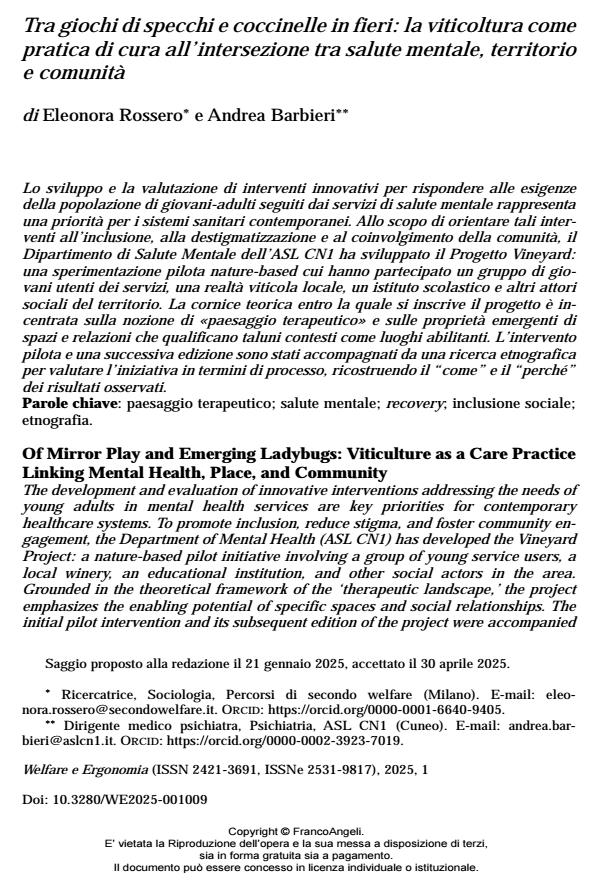Of Mirror Play and Emerging Ladybugs: Viticulture as a Care Practice Linking Mental Health, Place, and Community
Journal title WELFARE E ERGONOMIA
Author/s Eleonora Rossero, Andrea Barbieri
Publishing Year 2025 Issue 2025/1
Language Italian Pages 11 P. 139-149 File size 55 KB
DOI 10.3280/WE2025-001010
DOI is like a bar code for intellectual property: to have more infomation
click here
Below, you can see the article first page
If you want to buy this article in PDF format, you can do it, following the instructions to buy download credits

FrancoAngeli is member of Publishers International Linking Association, Inc (PILA), a not-for-profit association which run the CrossRef service enabling links to and from online scholarly content.
The development and evaluation of innovative interventions addressing the needs of young adults in mental health services are key priorities for contemporary healthcare systems. To promote inclusion, reduce stigma, and foster community engagement, the Department of Mental Health (ASL CN1) has developed the Vineyard Project: a nature-based pilot initiative involving a group of young service users, a local winery, an educational institution, and other social actors in the area. Grounded in the theoretical framework of the ‘therapeutic landscape,’ the project emphasizes the enabling potential of specific spaces and social relationships. The initial pilot intervention and its subsequent edition of the project were accompanied by ethnographic research aimed at evaluating the intervention process and exploring “how” and “why” the observed outcomes were achieved.
Keywords: therapeutic landscape; mental health; recovery; social inclusion; ethnography.
Eleonora Rossero, Andrea Barbieri, Tra giochi di specchi e coccinelle in fieri: la viticoltura come pratica di cura all’intersezione tra salute mentale, territorio e comunità in "WELFARE E ERGONOMIA" 1/2025, pp 139-149, DOI: 10.3280/WE2025-001010